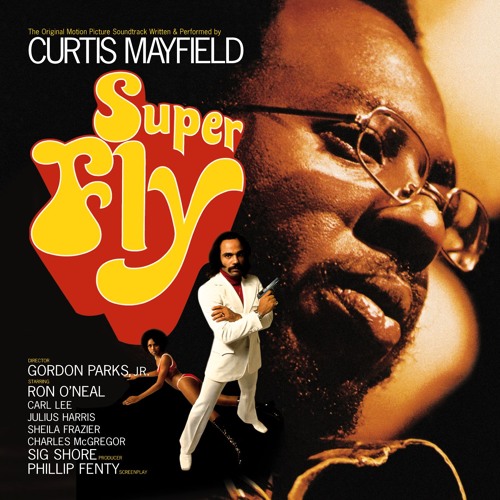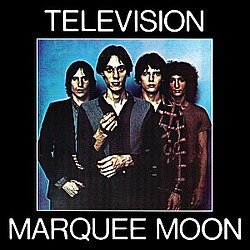 When Elton John released “Bennie and the Jets” in 1974 as part of his landmark album Goodbye Yellow Brick Road, no one could have predicted that this strange, stuttering slice of glam-pop would become one of his defining anthems. The song didn’t sound like anything else on the radio. It was a live track that wasn’t live, a satire that sounded sincere, and a futuristic vision of rock and roll delivered by a bespectacled piano player dressed like a space-age Liberace. The song was layered with echoing crowd noise, offbeat rhythms, and that unforgettable staccato piano riff that makes it instantly recognizable. Yet beneath its playful energy and oddball production, “Bennie and the Jets” spoke volumes about celebrity culture, the artifice of fame, and the spectacle that pop music was becoming in the 1970s. It was Elton John and lyricist Bernie Taupin’s sly commentary on the industry they were conquering—and it remains one of the most brilliant songs of its era.
When Elton John released “Bennie and the Jets” in 1974 as part of his landmark album Goodbye Yellow Brick Road, no one could have predicted that this strange, stuttering slice of glam-pop would become one of his defining anthems. The song didn’t sound like anything else on the radio. It was a live track that wasn’t live, a satire that sounded sincere, and a futuristic vision of rock and roll delivered by a bespectacled piano player dressed like a space-age Liberace. The song was layered with echoing crowd noise, offbeat rhythms, and that unforgettable staccato piano riff that makes it instantly recognizable. Yet beneath its playful energy and oddball production, “Bennie and the Jets” spoke volumes about celebrity culture, the artifice of fame, and the spectacle that pop music was becoming in the 1970s. It was Elton John and lyricist Bernie Taupin’s sly commentary on the industry they were conquering—and it remains one of the most brilliant songs of its era.
The Birth of a Glam Classic
By 1973, Elton John was already one of the biggest artists in the world. Goodbye Yellow Brick Road, recorded at Château d’Hérouville in France, was a double album filled with genre-hopping brilliance—rock, pop, ballads, and even a dash of progressive flair. “Bennie and the Jets” almost didn’t make the cut as a single. Elton himself didn’t think it would work on American radio. But his label and DJ’s insisted otherwise, and by early 1974, it became a number one hit on the Billboard Hot 100.
The song’s sound was revolutionary. Producer Gus Dudgeon crafted it to sound like a live performance, complete with audience applause, cheers, and echoes. But those sounds weren’t recorded in a stadium—they were lifted from various live recordings and layered into the studio track to simulate a live concert. That decision gave “Bennie and the Jets” a surreal, almost meta quality. You could hear a crowd losing its mind for a fictional band inside a song that itself was fiction. Elton wasn’t just performing “Bennie and the Jets”; he was creating a world where Bennie was already a superstar.
The central hook—the syncopated, slightly offbeat piano chords that Elton hammers with swagger—became one of his trademarks. It was both funky and robotic, soulful and mechanical, perfectly mirroring the song’s futuristic theme. When Elton belts out, “Hey kids, shake it loose together,” it feels like an invitation to a strange, glamorous cult of music lovers orbiting around the mysterious Bennie and her band of electric warriors.
The Myth of Bennie
Lyrically, Bernie Taupin crafted one of his most imaginative concepts. The song introduces “Bennie,” a fictional female bandleader who fronts a futuristic group that plays synthesizers and blows minds. She’s “got electric boots, a mohair suit,” and she’s “a solid wall of sound.” Bennie is a creation of fantasy and spectacle—a rock star for a world where image is everything.
Taupin later explained that he wrote “Bennie and the Jets” as satire, poking fun at the music industry’s obsession with fame, fashion, and artificiality. The early 1970s were the height of glam rock: David Bowie had Ziggy Stardust, T. Rex ruled British radio, and artists were pushing androgyny, futurism, and excess to new levels. Taupin and John took that concept and made it both a parody and a tribute.
Bennie is the embodiment of that glam ideal—an artist who’s more legend than human. The “Jets” are her entourage, her band, her mythos. Together, they represent the synthetic future of pop stardom, where authenticity is less important than allure. It was both a critique of the machinery of fame and an acknowledgment that Elton himself was part of that machine.
The Magic of the Performance
Musically, “Bennie and the Jets” is unlike anything Elton John had released before—or since. The tempo is slow and deliberate, built around that irresistible piano pattern. The rhythm is slightly off-kilter, giving the song a lurching, hypnotic feel. Dee Murray’s bass line bubbles underneath, Nigel Olsson’s drums land like thunderclaps, and Davey Johnstone’s guitar work adds subtle texture without ever stealing focus from Elton’s piano.
The way Elton delivers the vocals—stuttering and syncopated—is part of the song’s charm. He plays with the phrasing, elongating syllables and breaking up words in strange, funky ways: “She’s got e-lec-tric boots, a mo-hair suit.” It’s a performance filled with confidence and flair, and yet there’s an underlying edge to it, a sense that the singer is both celebrating and questioning the spectacle he’s describing.
When the chorus hits—“B-B-B-Bennie and the Jets”—it’s pure pop hypnosis. That stutter wasn’t in the original lyric; it was Elton’s improvisation during the recording session. It gave the song its signature quirk, one that fans still mimic to this day.
From Studio Experiment to Global Anthem
When “Bennie and the Jets” hit radio, listeners didn’t know what to make of it. Some thought it was a live recording. Others couldn’t believe the audacity of its sound. But once it caught on, it exploded. The song reached number one on the Billboard Hot 100, number one in Canada, and became a massive hit in multiple countries.
For Elton, it marked a turning point. “Bennie and the Jets” crossed over into R&B and soul audiences, which was rare for a white British rock artist at the time. In fact, the song became a favorite on Black radio stations, thanks to its funky rhythm and swaggering groove. Elton would later perform it on Soul Train, becoming one of the first major white rock stars to appear on the show. That performance solidified his universal appeal and broke cultural boundaries in a way few artists could achieve.
Pop Culture Impact and Legacy
Decades later, “Bennie and the Jets” has become one of Elton John’s most iconic songs. It’s been featured in movies, commercials, and television shows. It’s been covered by artists ranging from Beastie Boys to Miguel to P!nk, each putting their own spin on its timeless rhythm. The song even found new life in the 2019 biopic Rocketman, where it underscored Elton’s transformation into the flamboyant superstar the world knows today.
But what makes the song endure isn’t just its infectious hook—it’s its depth. Beneath the glitz and glam, “Bennie and the Jets” is a commentary on fame, spectacle, and the blurred lines between reality and illusion. It predicted the rise of the manufactured pop star, the influencer, the hologram concert. Bennie could easily be a 21st-century phenomenon, a digital avatar commanding millions of fans through a screen.
The fact that this song came out in 1974 makes it even more prophetic. Elton and Taupin saw where the industry was heading—toward image-driven stardom, where musicians became brands and personas became as important as the songs themselves. “Bennie and the Jets” captured that shift in real time and wrapped it in a melody so irresistible that listeners couldn’t help but sing along.
Elton’s Enduring Stage Magic
On stage, “Bennie and the Jets” has become one of Elton John’s most reliable showstoppers. It often opens his concerts, setting the tone with its stomping rhythm and electrifying piano intro. As soon as those first notes hit, audiences erupt, clapping along to the beat, chanting the chorus, and feeling that same strange euphoria that’s been pulsing through the song for five decades.
Even Elton himself has acknowledged how unlikely the song’s success was. He’s said that it shouldn’t have worked—it’s too odd, too offbeat—but somehow it did. That unpredictability is part of what makes Elton John’s catalog so special. He took risks, embraced eccentricity, and turned even the strangest musical experiments into classics.
The Art of Taupin’s Storytelling
Bernie Taupin deserves immense credit for the song’s brilliance. His lyrics read like a sci-fi short story written for the rock and roll age. He gives us just enough to imagine Bennie and her world, but never too much detail. We’re left to fill in the blanks—what do the Jets look like? What kind of “electric boots” does Bennie wear? What’s her show like? That mystery fuels the song’s mythos.
Taupin has said he was inspired by the idea of futuristic bands taking over the world—mechanical, otherworldly, unstoppable. It was a time when rock music was becoming spectacle, when artists like Bowie and Roxy Music were pushing visual boundaries. “Bennie and the Jets” took that to its logical extreme: a vision of rock stardom where humanity was secondary to style.
A Song That Never Ages
Despite being half a century old, “Bennie and the Jets” still sounds ahead of its time. Its structure is unconventional, its sound remains fresh, and its message is eerily relevant. Modern pop owes a debt to songs like this—tracks that blurred the line between art and artifice, performance and persona.
You can hear echoes of “Bennie and the Jets” in artists like Lady Gaga, who blends theatrics and music into one larger-than-life experience. You can see it in acts like Daft Punk, who hide behind personas while redefining what it means to perform. Bennie’s influence extends far beyond the 1970s—it’s embedded in the DNA of pop culture itself.
Conclusion: The Eternal Jet Set
“Bennie and the Jets” isn’t just a song—it’s a universe. It’s a commentary, a satire, a performance, and a prophecy all rolled into one. When Elton John sat at his piano and pounded out that rhythm in 1973, he probably didn’t realize he was writing a song that would capture the essence of fame, fashion, and futurism for generations to come.
From its fake crowd noise to its unforgettable chorus, “Bennie and the Jets” remains one of the most unique and important recordings of the 1970s. It’s weird, it’s wonderful, and it’s wildly original—everything that defines Elton John at his best.
Nearly fifty years later, we’re still listening to Bennie and her band, still clapping along to that stuttering beat, still dazzled by the spectacle. In a world where pop stars are now digital avatars and image is everything, Elton John and Bernie Taupin’s creation feels more relevant than ever. Bennie was the future—and somehow, she still is.


